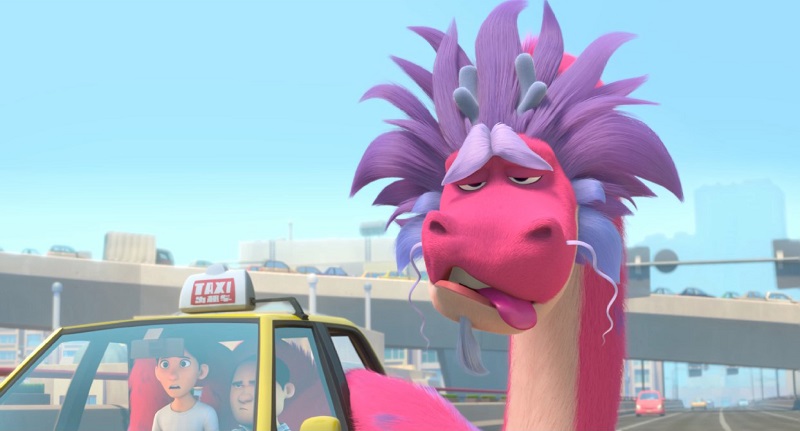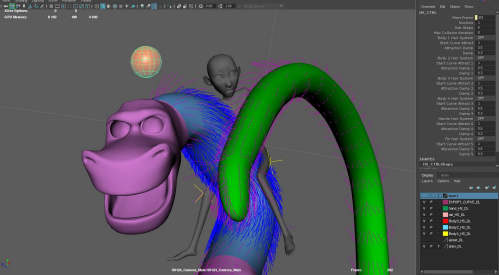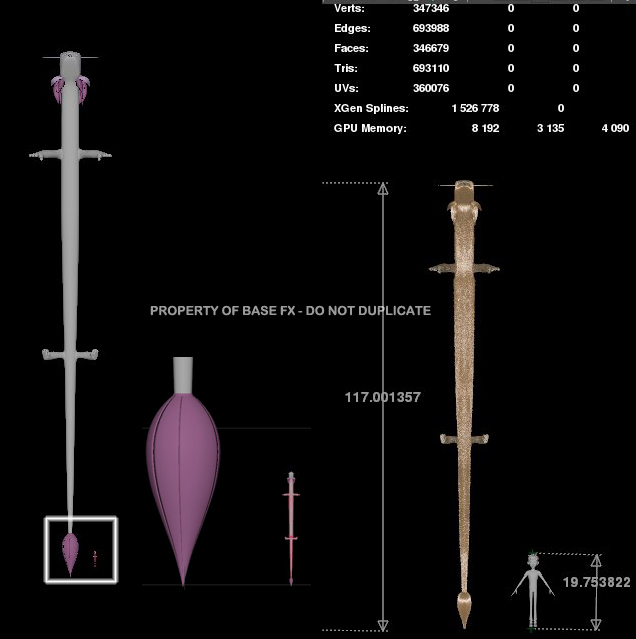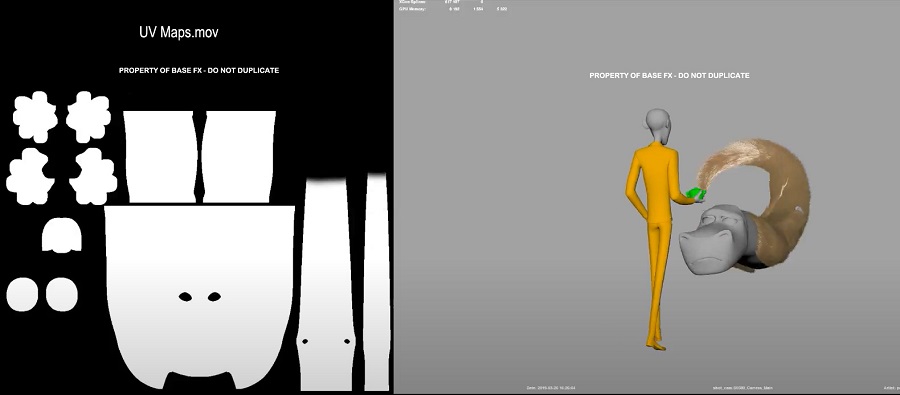Dragons are magnificent creatures but often a little scary but not Long, in fact he is quite the opposite. But how do you make a cute dragon? Have some plush fur instead of scales so that everyone will love to cuddle him. Creating a furry character, the size of Long was incredibly challenging. The animation style required a lot of stretch and squash and had to maintain graphic silhouettes. His whiskers and mane hair were heavily used to depict his expressions and emotions and his tail tuft was used as an extra hand. He could shape shift, with shots that required him to grow additional fingers on hand or convert his lower body into stairs on which he could walk. And the most challenging aspect of his fur, he scales down and lives in a small Teapot. Animated scaling of fur is always difficult and there are multiple instances where we had to fit him inside a teapot and bring him out of it on camera. Wish Dragon is the first film produced and made by Base Animation, a new animation studio part of Base FX, with a task of making such a creatively demanding and technically complex Furry character as Long. We had to develop our grooming and simulation tool sets around him and build a pipeline to support it together.
GROOMING
Long is one of the first characters to be groomed using ‘Xgen interactive’ which was newly released by Autodesk Maya then. The grooming was done in parallel with simulation and extensive animation testing to ensure it can hold up all the graphic shapes. Procedural guide grooming technique was implemented for the body, whereas beard, mane and tail guides were hand sculpted that could support a wide range of complex shapes and motion. The groom was done in collaboration with CFX and Surfacing, where CFX was incharge of styling and surfacing on final look dev and shading.
MOTION
Long being the primary character, it was animated over 700+ shots. While we had a beautiful looking furry dragon, the challenge was to maintain that fur during motion. The sharp angular graphic shape and the fur distribution during stretch and squash. Also animation wanted to pose mane, whiskers and tail on most shots. And there were a lot of crazy action shots that had to be dealt meticulously. Long had three hair/fur setups for each animation, post animation and simulation.
ANIMATION
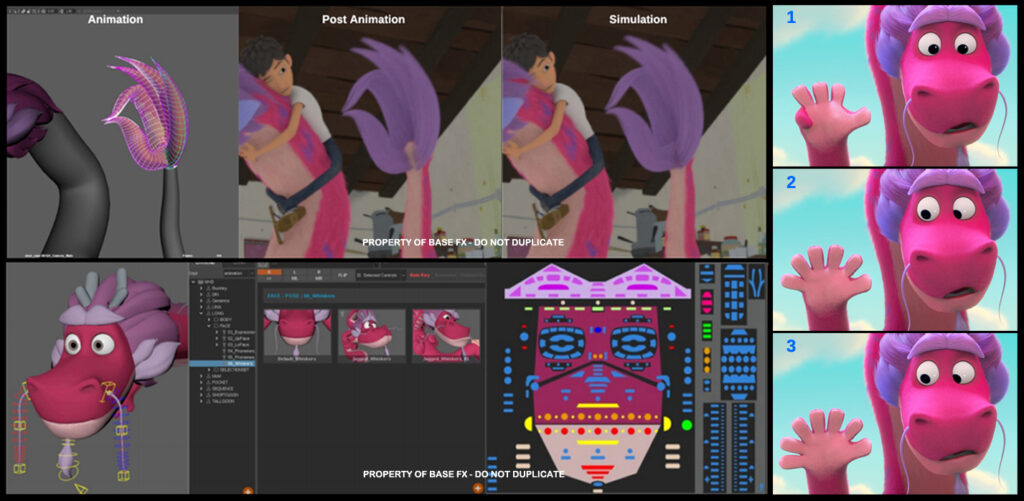
Controls, facial setup and pose library for hair, one off complex shot with growing additional fingers on hand with fur.
In animation they could reshape the geometric representation of hair and it would automatically update the guide and the scalp during render. They also had a custom simulation setup for mane, tail and whiskers which was developed in the CFX department so the simulation results were consistent across both departments. This would help animators to view simulation while animating with an ability to tweak and choose the kind of motion they wanted based on a pose library of different custom hair shapes. There was also a full body custom guide deformation setup, which would hold the graphic shape of body fur and would auto- execute post animation.
SIMULATION
Long’s fur was simulated using ‘nHair’ predominantly and was broken into multiple simulation setups for better speed, flexibility and individual control on different parts of fur. It helped in simulating only on areas visible in camera and not the entire character every time.
Also this helped in avoiding self collision between different hair groups. On top of the regular hair simulation, we used a procedural way of generating additional guide curves on areas that needed detailed simulation and collision. The hair simulation setup files were without fur and a post script was used to attach the simulated guide curves to the fur groom file.
SCALING LONG
This was the USP, which added to his magic. Scaling a character with fur is one of the most difficult CG tasks. In our case, the need was to scale him down almost 16 times to fit him into a Teapot. Also there were shots where he was scaled up 20 times as well as stretched. We had to make sure fur holds up in both scenarios. And most times the scaling was animated and on camera, and this was the most magical aspect of the character. Given there were multiple shots, we had to build a combination of procedural techniques in Houdini and dynamic scripts in Maya, both of which were linked to his fur attributes to achieve those effects.
(This article has been contributed by CFX developer on ‘Wish Dragon’ movie Pradipto Sengupta (currently working at DreamWorks Animation as CFX lead) and Base FX CFX supervisor Anand Palaniswamy.)


